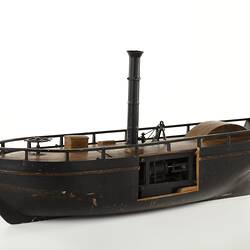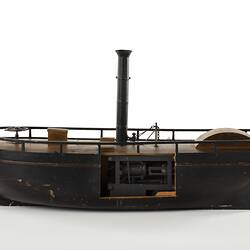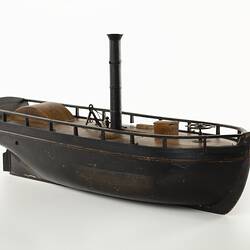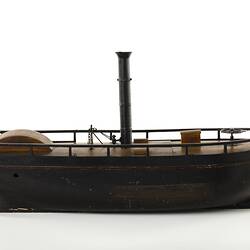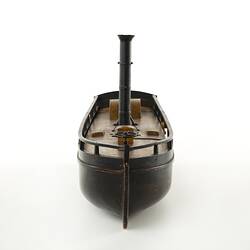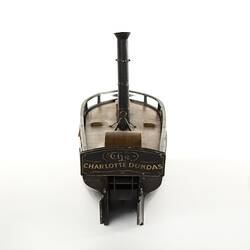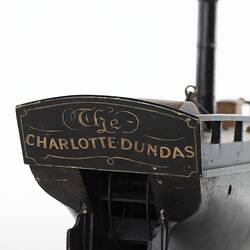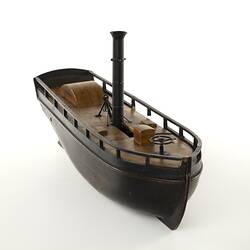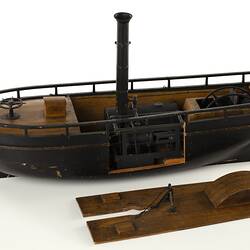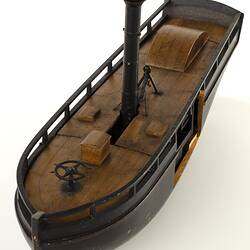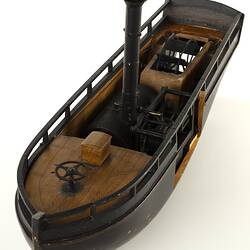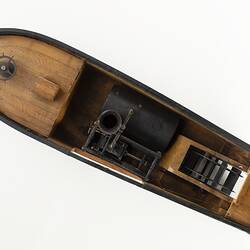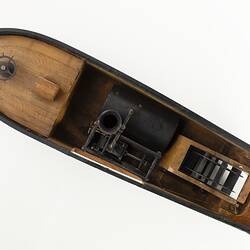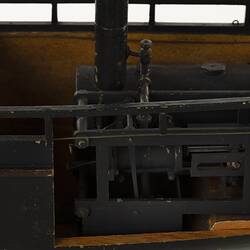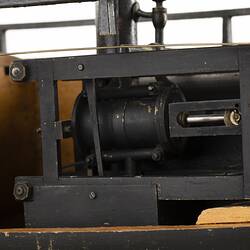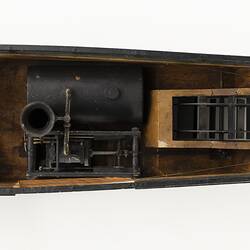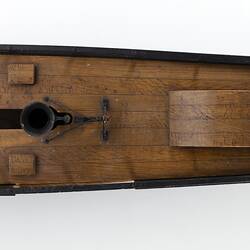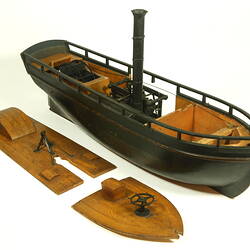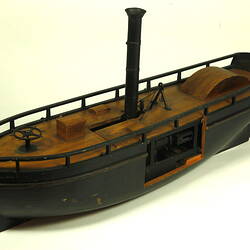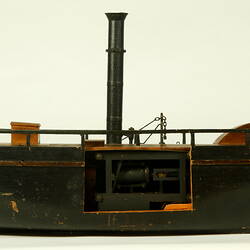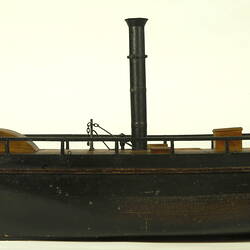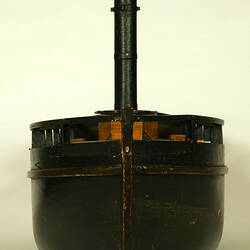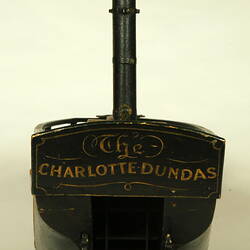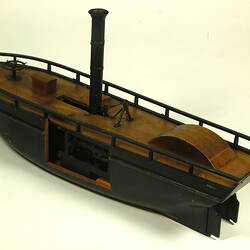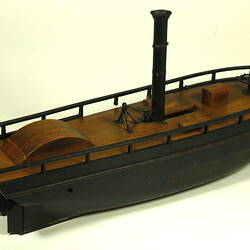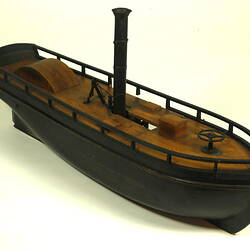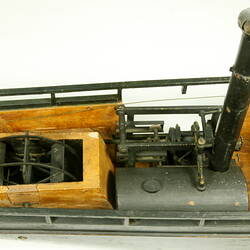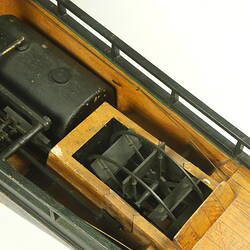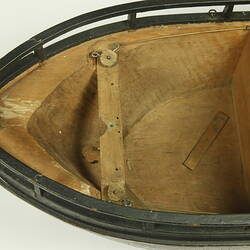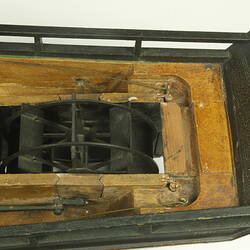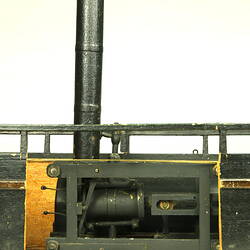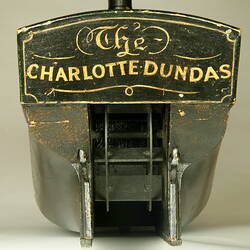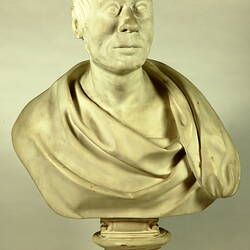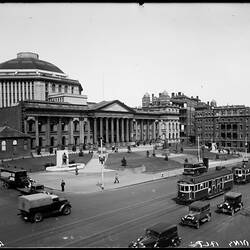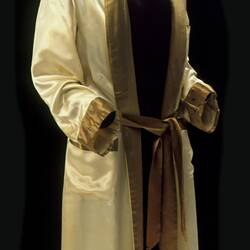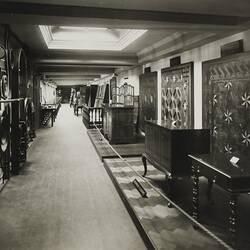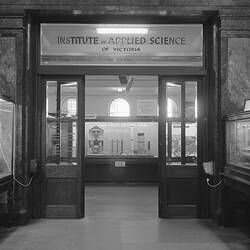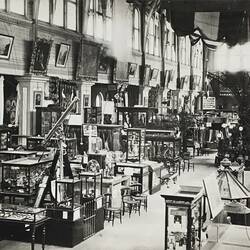Summary
Model of "Charlotte Dundas" paddle steamer, made circa 1852.
Steam powered vessel designed by William Symington of Scotland, and constructed about 1801-2. Generally regarded as the first practical vessel built for, and equipped with a steam engine. Symington received a patent for his marine steam engine design on 14 October 1801. The model is believed to have been made by the inventor's son, Andrew Symington, about 1852 and was brought to Victoria by another son, William Symington, in 1855. The Charlotte Dundas was a stern wheel paddle steamer for towing boats on the Forth and Clyde Canal. It was later banned by the canal owners for allegedly causing damage to the banks from her wash.
The model was exhibited at 1888 Melbourne Centennial International Exhibition. The official catalogue of the 1888 exhibition, p.671, lists "model of the 'William Symington' of 1802. The first practical steamboat. This model is the very one made by the inventor himself". It is listed as being exhibited by Thos. Wallace of Osborne Street, Williamstown, who also exhibited a model of a yacht. Family tradition is that this model was first exhibited at the 1866 Inter-colonial Exhibition in Melbourne. The model was loaned to the Museum by William Symington in 1889 and subsequently donated.
Physical Description
Wooden paddle steamer model. The deck can be lifted away to reveal the inner workings (including the wheel and model engine) of the model. The model has a single chimney and a wheel mounted onto the deck at the bow.
More Information
-
Collection Names
-
Collecting Areas
-
Acquisition Information
Loan & Subsequent Donation from Mr William Symington Jnr, C.E., Exhibition: 1888 Centennial, Melbourne, 1889
-
Modelmaker (Probable)
Mr Andrew Symington, Kettle, Fife, Scotland, Great Britain, circa 1852
-
Past Owner
Mr William Symington Jnr, C.E., Bacchus Marsh, Victoria, Australia, 1855-1889
William Symington, jnr died at Bacchus Marsh in March 1867. -
Place & Date Exhibited
Royal Exhibition Building (REB), Rathdowne Street, Carlton, Greater Melbourne, Victoria, Australia, 1888-1889
-
Classification
Water transport, Steam power, Model paddlesteamers - tugboats
-
Category
-
Discipline
-
Type of item
-
Overall Dimensions
750 mm (Length), 195 mm (Width), 354 mm (Height)
-
Keywords
Exhibitions: Melbourne International Centennial, 1888-1889, Paddle Steamers, Ship Models, Steam Engines

